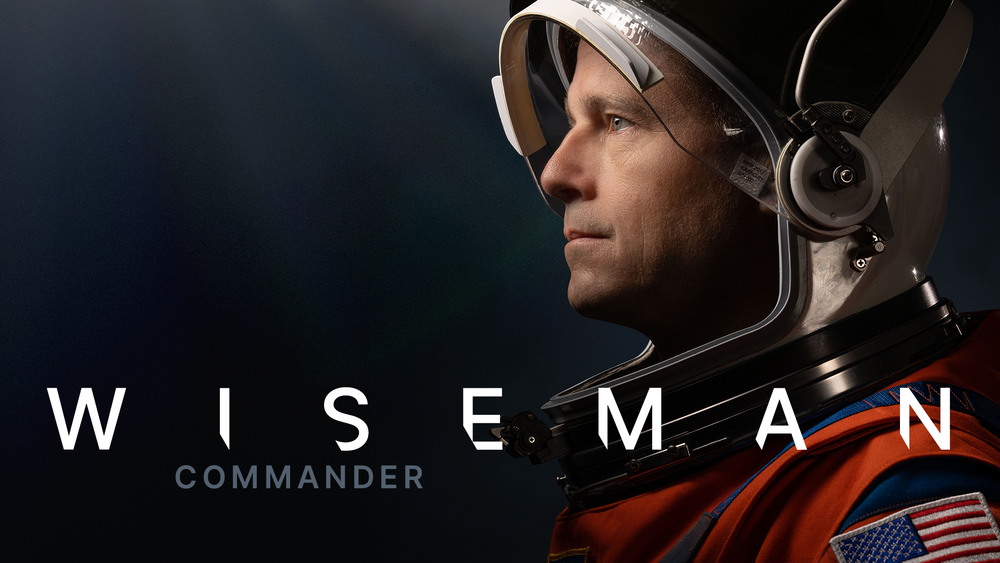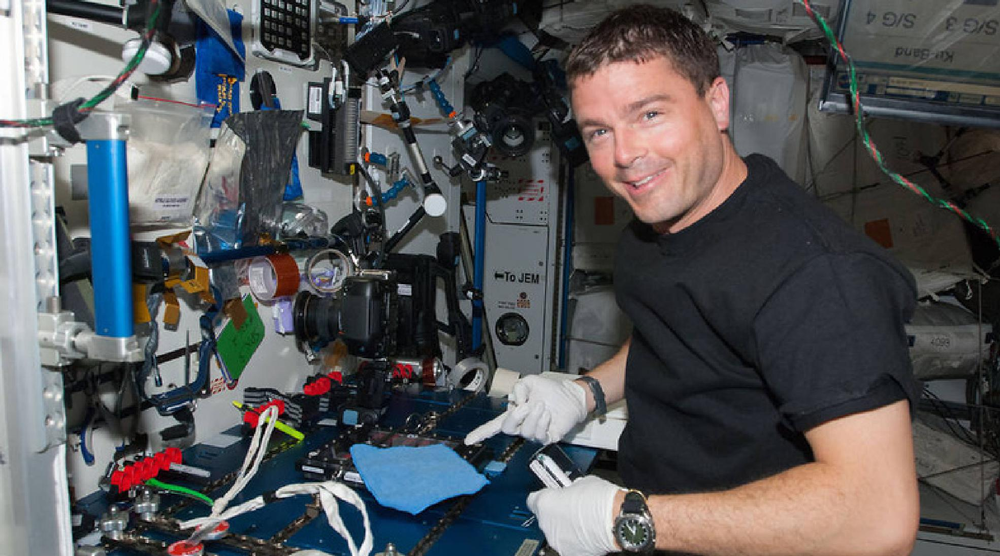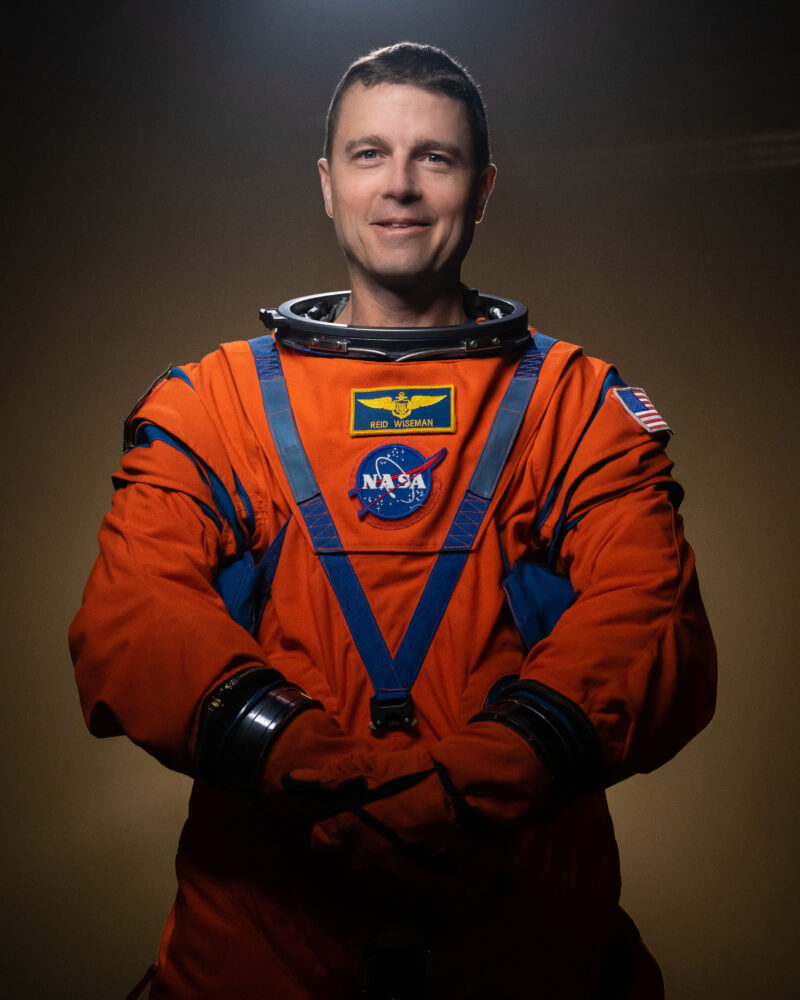Get to Know Commander Reid Wiseman of the Artemis II Mission
The world now knows the names of the four Houston-based astronauts who will launch on the first crewed lunar mission in 50 years. Artemis II will be the second scheduled flight of the Artemis program and the first crewed Artemis mission. NASA astronauts Reid Wiseman, Victor Glover, and Christina Hammock Koch, and Canadian Space Agency astronaut Jeremy Hansen will orbit the Moon during Artemis II. The planned launch for the roughly 10-day mission is November 2024.
The Artemis II crew will venture on the lunar flyby mission using the Space Launch System and Orion spacecraft. Commander Wiseman shared with us one of his favorite memories at NASA's Johnson Space Center, meeting astronaut Sunita L. Williams whom he regards as a global hero. He also shared what he’s looking forward to most. “I love walking into Mission Control and seeing that entire team,” Wiseman said.
Read ahead for the full interview.

***
What was your favorite experience here at NASA’S Johnson Space Center, and what have you learned from your colleagues?
I want to share two stories. First, I was hired here in 2009. I was coming from the military, and I really didn't know what to expect. When I got to Johnson Space Center, the thing that really fascinated me was this is a well-educated workforce with an absolute common goal, which is mission success and assured human return to Earth from their missions. I see it in everybody that works here. It doesn't matter what your job is. I love walking into Mission Control and seeing that entire team, from the folks who keep it clean, those who keep it running, all the electrical supply, distribution, even just everything in flight control, everybody. It's just awesome.
I also want to share my favorite unique memory, which was right before I got hired. I was here interviewing, and from across the parking lot outside of 4 South, I saw this truly global hero, Suni Williams. I barely knew her. She was an astronaut. I was starstruck. I just look at her and say, 'Suni Williams.' She screamed back, 'Reid!' I'll never forget that, you know. Oh, my gosh, here's this completely accomplished astronaut. I'm in awe of her. She really has no idea who I am. And she just screamed my name across a parking lot. I was like, that is who I want to work with, and this is where I want to work. I love this community that we have here. Not every day is perfect, but it's an amazing team.
What is one thing you wish people knew about you and a misconception about astronauts?
A misconception about astronauts is that we are people just like you and we got lucky. We had accomplished lives, just like all of you that work here at the Johnson Space Center. We're busy, but we're approachable. We love to laugh. We like to know who we work with and how your families are, and what your hobbies are. We should just be relatable people. I think that's the biggest misconception. There's nothing special about us. Our job is awesome. And we're very lucky to have it.
I love to joke around. Usually, if I'm joking around, it's because I'm probably a little anxious and nervous about something. I find a lot of releasing stress with a little bit of humor. I think laughing as a human is very good therapy. But sometimes people get a little confused because when I get into a simulator, I'm in an intense environment, and I am just 100% focused. I want the whole team to get the job done. I think people are caught off guard like, well, what's wrong? I'm like, 'Oh, no, we have a job to do right now. Let's get this done.' And it's important, so it's good to get to know that balance.

***
What does returning to the Moon mean for you? What are you looking forward to the most?
Returning to the Moon, to me, means Artemis Generation. That is what it means. This is our turn to go explore, and to get humans back to low Earth orbit is amazing. We have been operating, and we know how to do that. I am so proud to be a part of the International Space Station and to have spent 165 days in low Earth orbit. Now, I am excited for our community as we're going to be operating out in the lunar environment again.
Can you explain what you hope to learn by venturing around the Moon? How would you describe to the wider general public why going to the Moon is so beneficial and valuable for NASA?
I love that the U.S. government and NASA have set their sights on Mars. Let's go explore Mars. And then you sit back and think, how are we going to do that? Okay, we know how to work in space. International Space Station has taught us how to do that. We have this entire commercial space industry that is being developed on the backbone of the International Space Station. We're going to hand over low Earth orbit to Commercial low Earth orbit development.
We have commercial resupply vehicles coming up, and now let's head out to the Moon and let's learn how to work in deep space. How to walk on the Moon, how to walk around the Moon with Gateway. We'll see again all that private industry building coming. We already see it with intuitive machines and SpaceX. Then we'll go on to Mars. To me, it's setting that long-term vision and then watching all the creativity and inspiration that comes along with it.
The planet is alive. Earth is a living thing. From space, you can see seasons changing, glaciers forming, continents reforming, and volcanoes erupting. The International Space Station not only connects us, it brings out the best in us by giving the world a common goal.

Getting to the Moon is extremely difficult. What challenges do you anticipate, and how do you plan to overcome them?
Artemis I was wildly successful, but now, we have to put these weird systems on with human beings. We are going to put four humans on there. We are going to go test this vehicle. We are going to test all the manual capabilities. We know that our experts and Mission Control Houston can fly this vehicle. Now, we must see if humans have the backup capability we need should something go wrong on future Artemis missions. I'm going to head out with Victor, Christina, and Jeremy, and we're going to test out every manual aspect of this vehicle that we can so that the next crew that gets on at Artemis III plus, all they have to worry about is their mission landing on the Moon.
What advancements and functionalities have people excited about this mission? What are the new updates?
For me, some of the awesome new updates are how we're going to get information relayed back to Houston. We have an optical communication system to significantly increase the bandwidth of what we can transfer back to Houston, which we will need for our deep space exploration missions to the lunar surface. Also, when I look at Orion, it's a really redundant vehicle, but it's redundant in the right ways. We have learned a lot by flying for decades, and we know exactly where to focus our resources.
I think Orion does that really well. The Space Launch System with heavy launch is robust. On Artemis I, it nailed its targets well within 1% of its objective. I mean, .000003%. It's really cool to see that vehicle coming along. But then where we're really going to get the value is NASA setting the course and watching private industry create these inventions and these different methods of flying. We see it with SpaceX landing first stage boosters’ sustainability. That is what we ultimately want out of this. It's an awesome time to be part of it.







